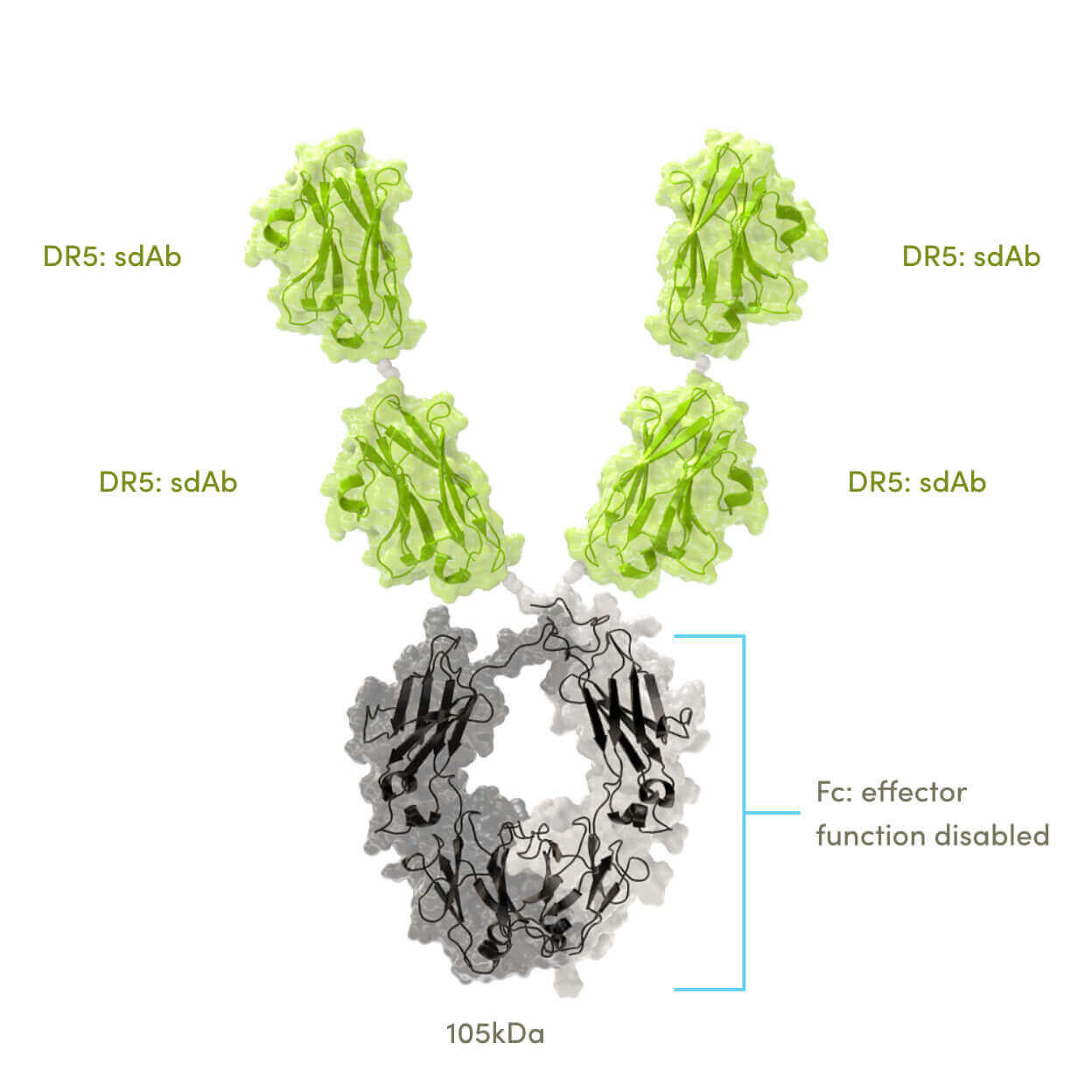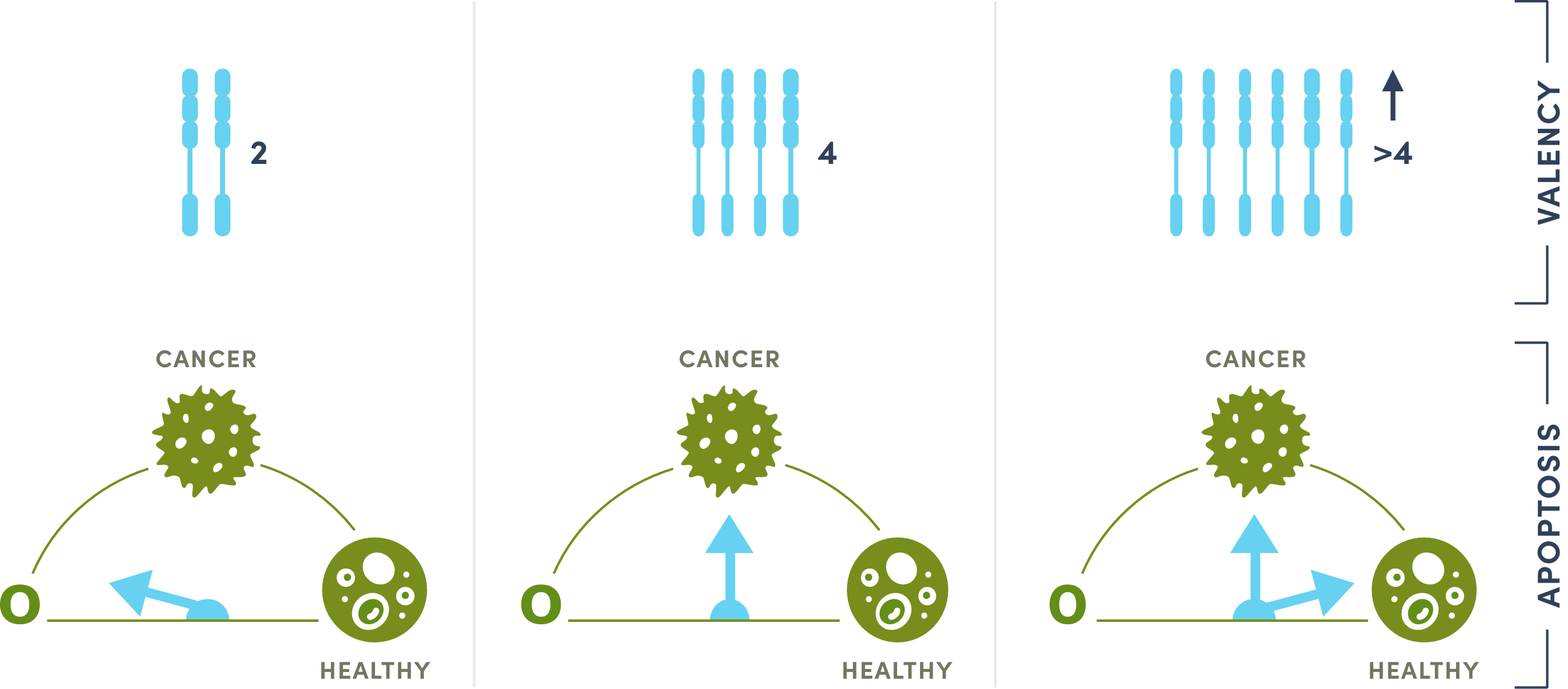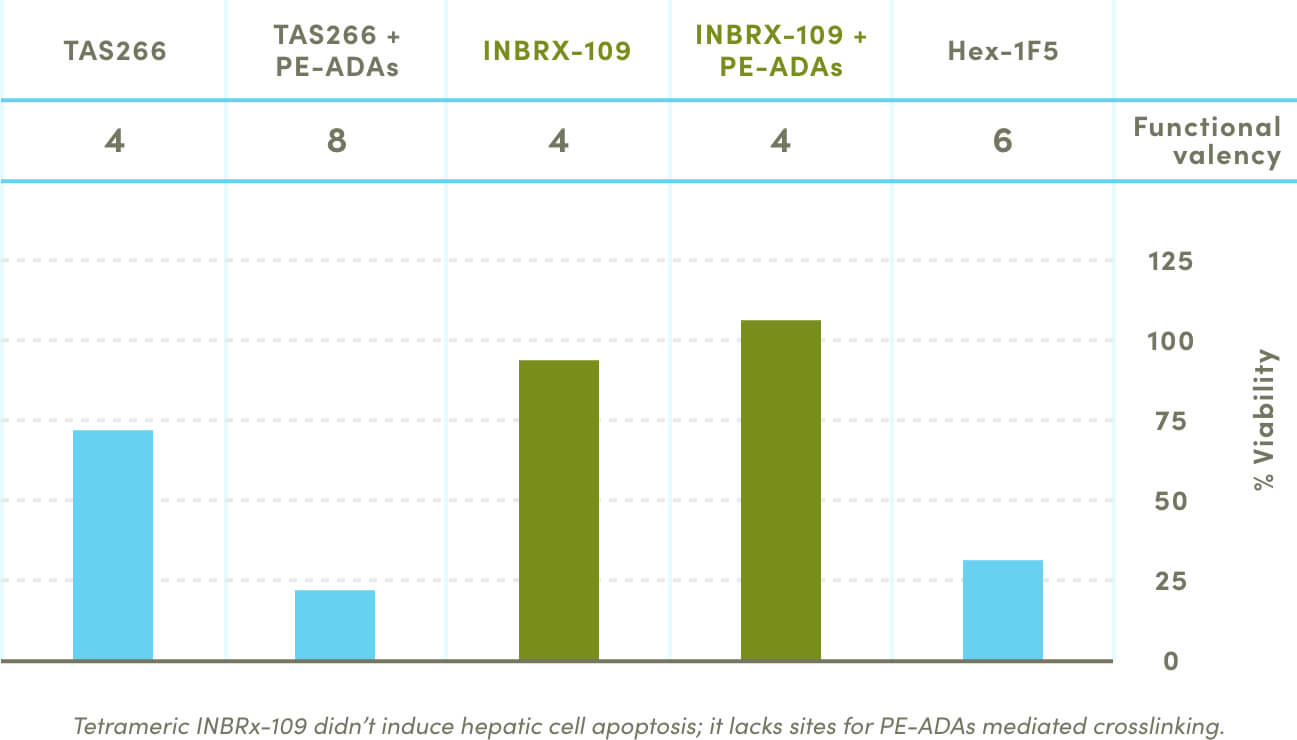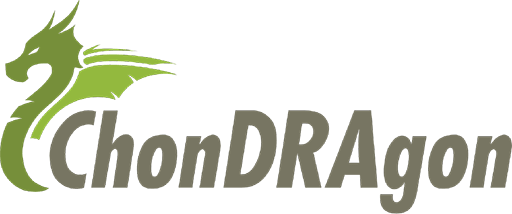- Hepatocytes may be subject to on-target toxicity for DR5 pathway agonism.
- Previous tetravalent DR5 agonists failed in the clinic due to hepatotoxicity—likely due to hyper-clustering by anti-drug antibodies.
- In vitro hepatic cell (HepaRG) death assay recapitulates toxicity of TAS266 + pre-existing anti-drug antibodies (PE-ADAs) in pooled human immunoglobulins.
- Proper valency is key: Hexavalent (Hex-1F5) is also hepatotoxic.

The Candidate
Our tetravalent DR5 agonist.
INBRX-109, our tetravalent DR5 agonistic antibody, is designed to exploit tumor-biased direct cell death induction by DR5 activation in numerous cancer types.
With a valency of four, it has the ability to potently agonize DR5 through efficient receptor clustering, causing cell death, but by way of our sdAb platform, also eliminates recognition by pre-existing anti-drug antibodies (ADAs) to lessen the potential for hyper-clustering.
Valency Drives DR5-Mediated Apoptosis
Apoptosis is the death of cells that occurs as a normal and controlled part of an organism’s growth or development. DR5 requires the proper valency to trigger apoptosis of cancer cells—and spare healthy cells.

Engineered to Avoid Hepatotoxicity
Human Hepatocyte Toxicity Assay


INBRX-109 Clinical Trial
The Phase 1 trial for INBRX-109 is currently enrolling combination treatment cohorts in Ewing sarcoma and SDH-deficient gastrointestinal stromal tumor (GIST).

The registration-enabling Phase 2 trial for INBRX-109 is currently enrolling patients with unresectable or metastatic conventional chondrosarcoma.
Phase 1 Trial Phase 2 Trial
